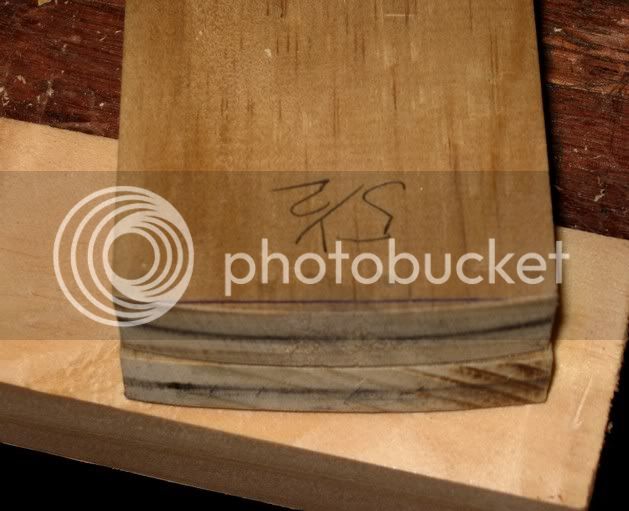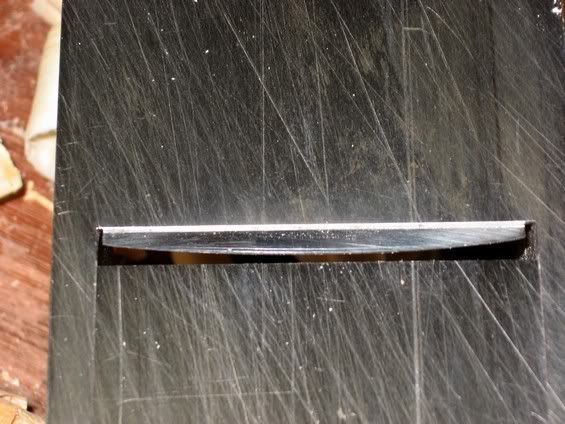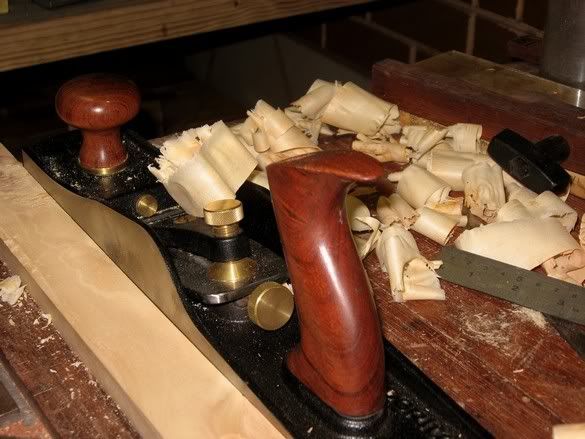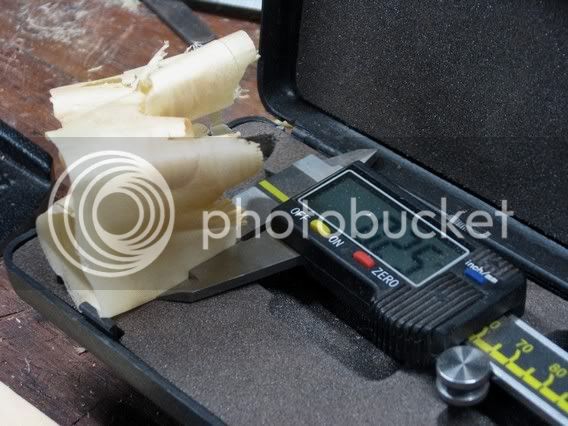Derek Cohen (Perth Oz)
Established Member
Hi Brent
Thanks for adding those points, especially the bit about "If we can camber a bevel down iron, we can camber a bevel up iron".
In summing up, I must explain a little more where the motivation for the original article came from...
When it comes to handplanes, I am torn between using BU and BD types. I enjoy the woodies I have, mostly HNT Gordon and Mugingfang, all bevel down planes. To prepare these, I grind a hollow bevel on a high speed grinder and then freehand them on waterstones. Nothing special. You will find this surprising perhaps, but I hate sharpening! One of the reasons I do research on it is because I am trying to find an economical method. KISS rules. I strop on leather as I work to maintain the edge. These BD planes work for me as I like their balance and the Gordon planes have the performance needed to work Australian timber.
There are a couple of reasons why I make the effort to get on top of BU planes. Firstly, these are exceptionally comfortable and balanced planes. This makes it easy to use them well. Secondly, they are capable of being tuned to work at very high angles of attack, which is essential for most of our hardwoods. I think that a lot of hobbyists enjoy their ability to use different cutting angles.
But ... they need to be prepared differently to BD planes. They are not the plane for someone who is not prepared to do things in a slightly obsessional way.
I spent quite a while trying to treat the BU planes as if they were BD planes. I ground bevels on the bench grinder to 50 degrees and then tried to freehand them on waterstones. I could get sharp edges, but they were straight edges only. Eventually I had to accept that these planes needed to be treated differently. Since the secondary bevel is so important (unlike BD planes, where the frog angle is all important), these planes need to be prepared with a honing guide (the exception being the 37 degree included angle. There I hollow grind at 25 degrees and then freehand). I really am quite lazy and a honing guide is not my preferred style, but I have spend quite a bit of time working with various guides, especially the Veritas, and using one can be quick and painless. Still, I wish I didn't need to use one, and this is where the ambivalence lies. This thread was about coming to terms with this issue and accepting what needs to be done to use BU planes with camber.
Happliy, only a jack requires a radical camber. A smoother and jointer can be done as easily as a BD plane.... just as long as you prepare the primary bevel at 25 degrees. The subsequent cambered microbevel needs to remove significantly less metal than cambering a full face high angle bevel. Thus the door to cambered BU blades is opened, and one of the main criticisms levelled at BU planes is now a thing of the past.
So the BU planes are technical to prepare, and this will contiinue to polarise users. Some will rail against this and see it as unnecessary fussiness. Others will just accept it as the entry fee to use a style of plane that is rewarding in use and performance.
I like both types of planes - there will always be pros and cons with each. It should not be about one or the other. One man's meat ....
Enjoy the rugby.
Regards from Perth
Derek
Thanks for adding those points, especially the bit about "If we can camber a bevel down iron, we can camber a bevel up iron".
In summing up, I must explain a little more where the motivation for the original article came from...
When it comes to handplanes, I am torn between using BU and BD types. I enjoy the woodies I have, mostly HNT Gordon and Mugingfang, all bevel down planes. To prepare these, I grind a hollow bevel on a high speed grinder and then freehand them on waterstones. Nothing special. You will find this surprising perhaps, but I hate sharpening! One of the reasons I do research on it is because I am trying to find an economical method. KISS rules. I strop on leather as I work to maintain the edge. These BD planes work for me as I like their balance and the Gordon planes have the performance needed to work Australian timber.
There are a couple of reasons why I make the effort to get on top of BU planes. Firstly, these are exceptionally comfortable and balanced planes. This makes it easy to use them well. Secondly, they are capable of being tuned to work at very high angles of attack, which is essential for most of our hardwoods. I think that a lot of hobbyists enjoy their ability to use different cutting angles.
But ... they need to be prepared differently to BD planes. They are not the plane for someone who is not prepared to do things in a slightly obsessional way.
I spent quite a while trying to treat the BU planes as if they were BD planes. I ground bevels on the bench grinder to 50 degrees and then tried to freehand them on waterstones. I could get sharp edges, but they were straight edges only. Eventually I had to accept that these planes needed to be treated differently. Since the secondary bevel is so important (unlike BD planes, where the frog angle is all important), these planes need to be prepared with a honing guide (the exception being the 37 degree included angle. There I hollow grind at 25 degrees and then freehand). I really am quite lazy and a honing guide is not my preferred style, but I have spend quite a bit of time working with various guides, especially the Veritas, and using one can be quick and painless. Still, I wish I didn't need to use one, and this is where the ambivalence lies. This thread was about coming to terms with this issue and accepting what needs to be done to use BU planes with camber.
Happliy, only a jack requires a radical camber. A smoother and jointer can be done as easily as a BD plane.... just as long as you prepare the primary bevel at 25 degrees. The subsequent cambered microbevel needs to remove significantly less metal than cambering a full face high angle bevel. Thus the door to cambered BU blades is opened, and one of the main criticisms levelled at BU planes is now a thing of the past.
So the BU planes are technical to prepare, and this will contiinue to polarise users. Some will rail against this and see it as unnecessary fussiness. Others will just accept it as the entry fee to use a style of plane that is rewarding in use and performance.
I like both types of planes - there will always be pros and cons with each. It should not be about one or the other. One man's meat ....
Enjoy the rugby.
Regards from Perth
Derek




































